Philips FC 8472/01 PowerPro Compact vacuum cleaner review: simple design and increased power
Philips household appliances are well-known products and not only due to the promotion of the brand.The same vacuum cleaners, household tools, marked with the Philips logo, show a high level of popularity among the people.
An illustrative example is the Philips FC8472 01 vacuum cleaner, which is a modern development that does not require the use of a filter bag. This, by the way, is one of the important factors that increases interest in the product on the market.
- Lightweight and compact
- Affordable price
- Excellent suction power - great for vacuuming carpets
- Convenient to clean dust container
- The presence of thermal protection of the engine from overheating
- Nozzles and hose are flimsy
- No good carrying handle
- There is no step-by-step power adjustment, only a shutter on the handle
In this publication, we will take a closer look at the FC8472 01 model, paying attention to the design features that do not involve the use of a traditional bag as a dust collector. Let's talk about the advantages and disadvantages of this vacuum cleaner and its operating parameters. We will also compare this model with its competitors - vacuum cleaners from other manufacturers with similar characteristics.
The content of the article:
Review of the Philips FC8472/01 model
The manufacturer himself described this project as “Powerful cyclone» fourth generation.Judging by the presentation, the useful suction power of the machine has been increased by almost 20%, precisely thanks to the construction of the design on the principles of cyclone technology.

Characteristic aspects of the “PowerCyclone 4” technology are increased air flow to achieve the effect of high-quality separation of dust from the air. High efficiency of media separation is achieved due to the cyclonic chamber, where the sucked air swirls at high speed.
Table of technical and operational parameters of the Philips FC8472 01 vacuum cleaner
| Maximum power consumption | 1800 W |
| Air flow force | 35 l/s |
| Noise level | 83 dB |
| Suction power | 350 W |
| Waste collection volume | 1.5 l |
| Vacuum cleaner weight | 4.5 kg |
The vacuum cleaner has a fairly compact design (406x285x238 mm), which clearly has a positive effect on user preferences when choosing equipment for purchase.
The electric power cord extends to a maximum length of 6 m, but given the presence of a telescopic rod-tube, coverage of an area within a radius of up to 9 meters is available during cleaning.
Design features of the vacuum cleaner
Essentially, machines with cyclone type filters monotonous. Meanwhile, despite the widespread use of cyclonic separation technology, the FC8472 01 model is structurally different in the improved design of the dust collector. The smooth, straight walls of the container provide minimal resistance to air flow.
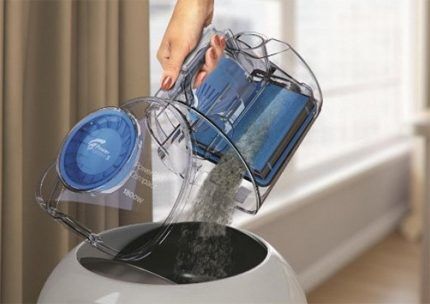
The improved design of the dust collector used in the Philips FC8472 01 vacuum cleaner is also convenient in terms of maintenance. When the user empties the container of debris, a dust cloud does not form due to the well-thought-out shape of the container.
Complete with working attachments
The bagless model Philips FC 8472/01 PowerPro Compact is equipped with four working attachments:
- Universal (TriActive Z).
- Small size.
- Slotted.
- Adjustable.
Universal accessory TriActive Z presents an innovative tool that is capable of collecting both large-sized particles of debris and fine dust in one pass. This type of nozzle, equipped with a special adapter, is well suited for use on hard surfaces.
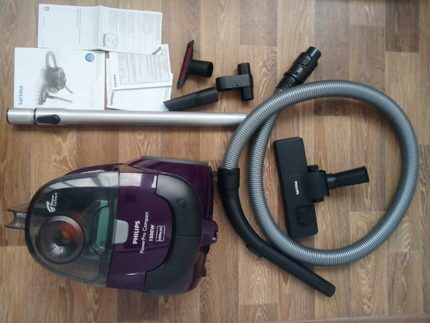
The peculiarity of the innovative nozzle is that special Z-shaped channels are made on the bottom of the working surface for intake of air flow. Thanks to this engineering solution, debris accumulations are completely (without any residue) transported into the vacuum cleaner channel, which cannot be stated in relation to other models of cleaning equipment.
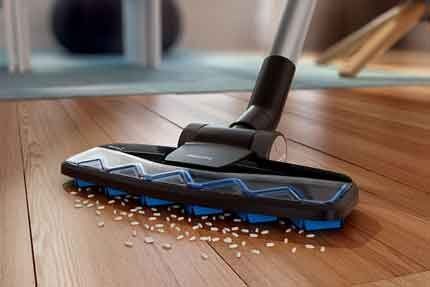
The body of the TriActive Z nozzle has a “flattened” configuration and this is another feature of the tool. Its low height above the floor ensures penetration under furniture and other hard-to-reach areas.
Complementing the tool with a special adapter ensures full compatibility with vacuum cleaners from other companies:
- Siemens,
- Miele,
- Hoover,
- Electrolux,
- Panasonic.
And this is not a complete list. Small-sized and crevice nozzles do not stand out with special features. These are, in fact, standard tools that are included in vacuum cleaners from many other manufacturers.
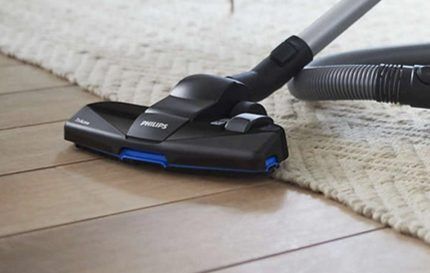
An adjustable nozzle is also available as an option for the vacuum cleaner model FC 8472/01 PowerLife – a tool for cleaning any type of coating (hard, soft). Switching the attachment to a specific mode is carried out using a key switch located directly on the top side of the accessory.
Intake air filtration
Regarding the features of the cyclone used in the vacuum cleaner, it was noted above.
This is the first stage of air flow filtration in the design of the FC 8472/01 machine, which is complemented by three more filter accessories:
- Motor protection (washable) EPA type.
- Protective for sponge type motor.
- Sponge type output.
This filter cascade ensures a truly high degree of purification of the air flow returned back to the room. However, periodic replacement of components is required to maintain filtration efficiency.
Therefore, a new vacuum cleaner usually comes with a spare set of filter elements, or such a set can be purchased as an option.
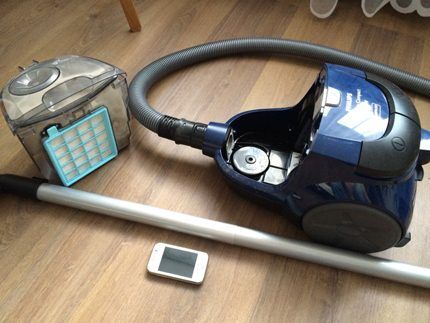
The bulk of dirt and dust remains in the cyclone container, and additional cleaning filters trap small suspended particles. Thanks to fine filters, the longevity of the vacuum cleaner engine is ensured, and the emission of fine particles along with the air coming out of the vacuum cleaner is eliminated.
The cyclone container of this vacuum cleaner is part of the machine body, but is made as a connecting part. It is enough to press the locking key located on the top of the container handle and slightly pull the handle forward to separate the container, for example, to free it from collected garbage.
Rod tube and corrugated hose
Vacuum cleaner attachments are usually connected through a rod tube. For the Philips FC 8472/01 model, engineers have developed an easy-to-use telescopic tube-rod based on aluminum.
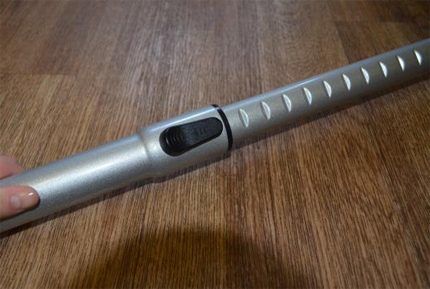
The telescopic mechanism allows the rod to be adjusted from full size to half length. In this case, the step range allows more than a dozen positions. The design of the corrugated elastic hose is distinguished by the unusual design of one end in the form of an elongated ergonomic handle 500 mm long.
The plastic tubular hose handle allows direct connection of working nozzles, which increases the convenience of cleaning non-standard, hard-to-reach areas. On the body of the handle there is a curtain that regulates the air suction force.
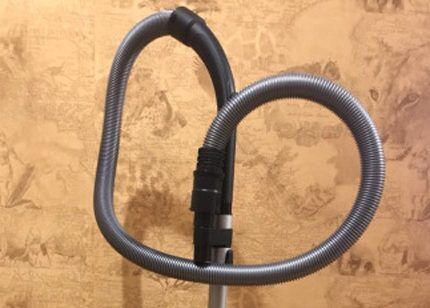
The other end of the flexible hose is made in a standard way - under a lock for connecting the corrugated hose to the suction pipe of the vacuum cleaner. The lock is made with a classic spring lock, which is lowered by pressing the corresponding button.
Power and cord control keys
Closer to the rear area of the vacuum cleaner, on the top panel there are two large control keys. The purpose of one (indicated by a drawing of a power plug) is to activate the reel on which the power cable is wound or unwound.
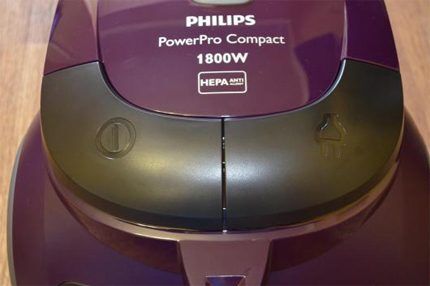
Another key, marked with a straight line inside a circle, is intended to turn the device on/off. Both keys are made large and designed to be operated using the soles of your feet. This solution does not have a unique feature, but it is convenient for the user.
Vacuum cleaner design and chassis
The design of the cleaning machine looks attractive and modern. The body parts are made without right angles, with smooth transitions from level to level. The coloring is discreet - purely work.All body parts are made of plastic.
The chassis of the vehicle consists of two large wheels and one small one. Actually, a classic design, typical for most models of cyclone-type vacuum cleaners. The wheels are also made of plastic with the addition of rubber edging along the radial outer circumference.
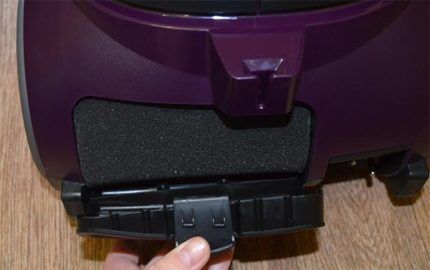
In practice, the running characteristics of the vacuum cleaner show good qualities, they move the device from place to place without difficulty for the user, and provide “agility” when working on different surfaces.
Below is a video showing the practical use of Dutch-made harvesting equipment. The author of the video clearly explains all the details of working with a cyclone-type machine:
Advantages and disadvantages of Philips FC 8472/01
The following technical and operational points can be noted as advantages for this model:
- cyclonic separation technology;
- ease of switching on and manipulating the cable;
- compact body design;
- good suction power;
- efficient operation of the universal nozzle;
- Convenient adjustment of the rod tube.
However, Philips engineers also failed to avoid shortcomings. As noted by the practice of domestic use, machine owners are faced with disadvantages, including: high noise levels, lack of power regulator, short service life of the universal nozzle.
Reviews from owners of this model
Evaluate the performance of a harvesting machine in different contexts. However, the factor of compactness firmly holds first place in the evaluation criteria.
Users often mention the small size of the vacuum cleaner, which, however, does not in any way affect power losses. On the contrary, with small dimensions the vacuum cleaner shows a high level of suction power.
Many people note satisfaction with the presence of a cyclone design, which makes it easier to maintain the vacuum cleaner in terms of freeing equipment from collected debris.
At the same time, there are a number of comments, for example, regarding the lack of a power regulator, and a number of owners also mention the rapid failure of the wheel system of the universal attachment. But overall the reviews are satisfactory.
He will introduce you to the best models of robotic vacuum cleaners with the Philips logo next article, which we strongly recommend reading.
Competitive models from other manufacturers
Based on the main technical factors of the FC 8472/01 PowerPro Compac vacuum cleaner, such as compactness and power level, we will consider possible competitors.
Competitor #1 - Samsung SC8836
Korean technology is superior in terms of power consumption and suction power, is quite compact and is valued by the market a little higher - about a thousand more. There is a power regulator and even an indication of how full the garbage collector is. True, the volume of the waste collector is slightly larger than that of the Philips FC 8472/01 - it is a 2-liter cyclone filter.
There is a foot switch, automatic cord rewind and the possibility of vertical parking. The weight of this larger model is 6 kg, the noise level is 79 dB. Otherwise, the difference is insignificant, unless you note the difference between the number of brushes included in the kit - Samsung has 4 of them, while Philips has only 3.
Leading in ratings bagless vacuum cleaners from Samsung presented here.We recommend that you familiarize yourself with the useful information we offer.
Competitor #2 - Thomas Multi Cyclone Pro 14
The model from Thomas is able to compete in this case in terms of the volume of the cyclone filter - it has a 2-liter dust collector. The length of the cord for connecting to the electrical network is the same - 6 m. As for the weight, the Thomas vacuum cleaner has a slightly larger one and is 5.5 kg. At the same time, the power consumption is the same - 1800 W.
Thomas and Philips are no different in functionality - they are only capable of dry cleaning. When operating, they make almost the same noise, and their cost is identical.
Significant differences in the design and construction of the cyclone filter. But the first and second vacuum cleaner, based on user liking, received an identical mark of 4.5 points out of a possible 5.
The Thomas company produces a wide range of cleaning equipment, top models and recommendations for buyers are set out in the article we recommend.
Competitor #3 - Bosch BGL 252101
The device from Bosch attracts with its high power rating (2100 W) and compact design of the case. The Bosch vacuum cleaner is built on waste separation technology using a cyclone filter.
The price difference between the models is almost zero, but the Bosch is lighter compared to the Philips - it weighs only 3 kg. There is an advantage in the presence of a parquet brush in the kit and stretching the power cord up to 8 meters versus 6, but this factor is clearly insignificant.
Popular among consumers vacuum cleaners with container from Bosch are described in detail in an article that examines this issue in detail, which is very interesting for a potential buyer.
Conclusions and best offers on the market
Our review and examples of practical applications of the vacuum cleaner created by Dutch engineers allow us to conclude that you can buy this machine and get truly productive work from it..
There are, of course, some costs to the design plan. However, if we approach the claims taking into account the quite affordable price of the device, these costs seem insignificant. The main result is high-quality cleaning and a long service life of the machine. This is already a reason to buy Philips FC8472 01.
Tell us about your own experience gained during the purchase and operation of a vacuum cleaner of this brand. Share the nuances and guidelines that determined your choice. Please leave comments in the block below, ask questions about points that interest you, and post photos related to the topic of the article.
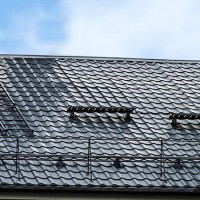



An inexpensive vacuum cleaner that is in no way inferior to its competitors, and in many ways superior. When choosing, the main criterion was the absence of dust bags to shake out the garbage and continue vacuuming. The vacuum cleaner is powerful and copes well with carpet and other surfaces. The cord is long, enough for my apartment with plenty to spare. The vacuum cleaner itself is compact and lightweight, easy to clean. Of the minuses: perhaps noisiness and a rather harsh hose.